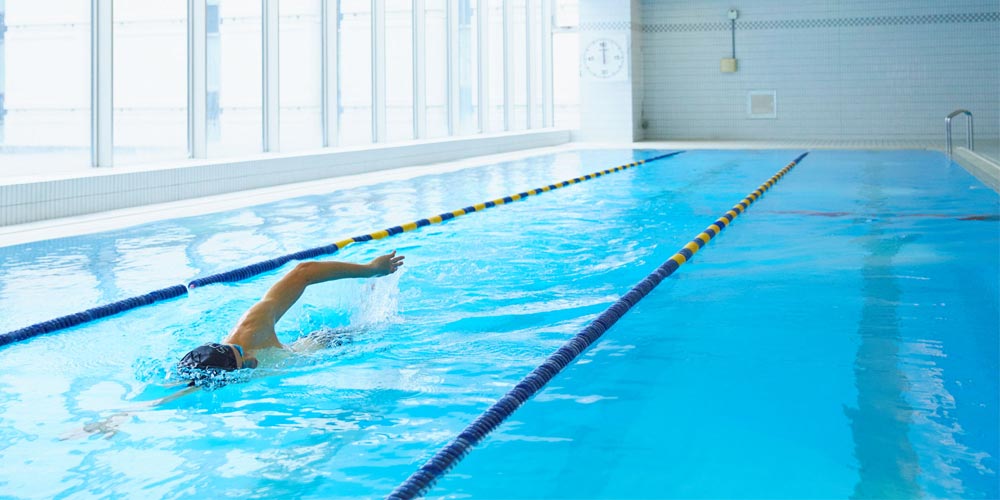Maintaining appropriate cyanuric acid (CYA) levels in your pool is crucial for ensuring effective chlorine stabilization and protecting the pool from the sun’s harmful UV rays. However, if the CYA levels in your pool are too low, it is essential to take immediate action to restore balance to the pool water.
Signs of Low CYA Levels
When the cyanuric acid (CYA) levels in the pool are low, they typically manifest in the following signs:
Increased Chlorine Addition Frequency with noticeable chlorine odor: If you find yourself needing to add chlorine more frequently to maintain water quality and there is a persistent chlorine odor in the pool , it may indicate low CYA levels. Low CYA levels can accelerate chlorine consumption.
Rapid Chlorine Loss: A significant decrease in chlorine levels within a short period is also a potential sign of low CYA levels. Low CYA levels may make chlorine more susceptible to degradation from factors like sunlight and heat.
Increased Algae Growth: In areas with ample sunlight, an increase in algae growth in the pool could signal low CYA levels. Insufficient CYA levels cause rapid loss of chlorine, which reduces the available chlorine in the water and leads to algae growth.
Poor Water Clarity: Reduced water clarity and increased turbidity can also be indicative of low CYA levels.
Process for Increasing CYA Levels
Test the current cyanuric acid concentration
When testing for cyanuric acid (CYA) levels in a pool, it’s essential to follow the proper procedure. Typically, this testing procedure aligns with Taylor’s turbidity testing method, although many other methods adhere to similar guidelines.
It’s crucial to note that water temperature can influence the CYA test results. Ensure that the water sample being tested is warmer than 21°C or 70 degrees Fahrenheit.
If the pool water temperature is below 21°C 70 degrees Fahrenheit, there are a couple of steps you can take to ensure accurate testing. You can either bring the water sample indoors to warm up or run hot tap water into the sample until it reaches the desired temperature. This precaution helps to maintain consistency and accuracy in CYA testing, ensuring reliable results for effective pool maintenance.
Determine the Recommended Cyanuric Acid Range:
Begin by consulting the guidelines provided by the pool manufacturer or seeking advice from pool professionals to determine the recommended cyanuric acid range for your specific pool type. Typically, the ideal range is 30-50 parts per million (ppm) for outdoor pools and 20-40 ppm for indoor pools.
Calculate the Required Amount:
Based on your pool’s size and the desired cyanuric acid level, calculate the amount of cyanuric acid required. You can use online calculators or refer to product labels for dosage instructions.
Cyanuric acid (g) = (the concentration you want to achieve – the current concentration) * the volume of water (m3)
Choose the Right Cyanuric Acid Product:
There are different forms of cyanuric acid available, such as granules, tablets, or liquid. Select a product that suits your preference and follow the manufacturer’s instructions. To quickly increase the concentration of cyanuric acid in water, it is recommended to use liquid, powder or small particles.
Precautions and Safety Measures:
Before adding cyanuric acid, ensure that the pool pump is running, and follow the safety precautions mentioned on the product packaging. It is advisable to wear protective gloves and eyewear to prevent direct contact with the product.
Application of Cyanuric Acid:
Slowly pour the solution into the pool while walking around the perimeter to ensure even distribution. It is recommended that powdered and granular CYA be moistened with water and evenly placed in the water, or dissolved in a dilute NaOH solution and then sprinkled (pay attention to adjust the pH).
Circulate and Test the Water:
Allow the pool pump to circulate the water for at least 24-48 hours to ensure proper distribution and dilution of the cyanuric acid throughout the pool. After the specified time, retest the cyanuric acid levels to confirm if they have reached the desired range.
Post time: Jun-21-2024

